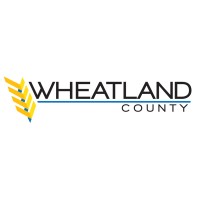Alberta has endured several dry spring and summer seasons over the years, and with El Nino bringing a dry winter this year, the province is at risk of a critical drought. Water levels are at below capacity in many rivers and reservoirs throughout the province, especially in southern Alberta.
With the expected critical drought coming this season, water-sharing agreements have been developed between the Town of Drumheller and 37 other water licensees in southern Alberta. The members involved in the agreements have combined access to 90 per cent of the water from the Bow and Oldman basins, and 70 per cent from the Red Deer basin, providing Albertans access to more water during the drought.
“With these agreements, Albertans are once again coming together when times get toughest. They will help make the most of our limited water supplies and make every drop count if a severe drought hits this summer,” states Minister of Environment and Protected Areas, Rebecca Schulz in a recent press release. “These irrigators, industry and municipalities are demonstrating the leadership, dedication and community spirit that makes this province great.”

Participating irrigators will cut back on their water use by others in need to get their water first, then use the remaining water available. Participating industries will use the minimum amount of water needed to maintain their operations in a safe way, while exploring other water conservation options. Participating municipalities, including Drumheller, will commit to reducing and saving five to ten per cent of water consumption from May to October if the drought response measures are implemented.
“For many years, Alberta's irrigation districts have been collaborating with the Government of Alberta and other water licence holders in the South Saskatchewan River Basin (SSRB) to progress responsible water use within the SSRB,” states the Chair of Alberta Irrigation Districts Association, Alex Ostrop. “The 2024 water-sharing agreements continue this important cooperation and put into action irrigation districts’ longstanding commitment to provide water for human use and livestock sustenance in times of extreme drought.”
The government will oversee the implementation of the agreements by monitoring conditions and alerting those involved if an agreement needs to be put into action in a specific basin. To ensure every drop is used, the government will optimize water storage and operations in certain basins and reservoirs for drought mitigation. They will also provide updates to the water supply forecast every two weeks.
Five areas that will be considered before deciding if an agreement needs to be implemented are what the moisture data shows, what irrigation districts decide what is an appropriate amount of water to use per acre, what the reservoir levels are at, the demand for water and what any local challenges might be.






























